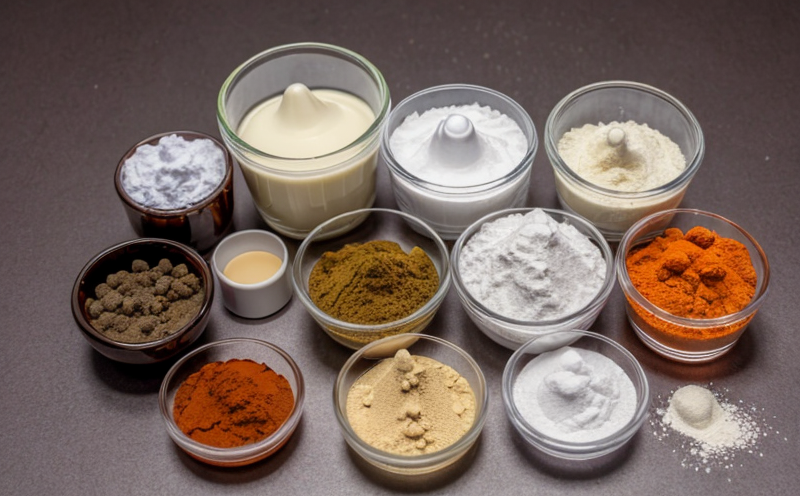Defoaming Agent Performance Testing
In the pharmaceutical industry, defoaming agents play a critical role in ensuring product quality and safety. These additives are used to prevent or reduce foam formation during various manufacturing processes such as mixing, homogenization, and blending of excipients and formulation ingredients. The performance testing of defoaming agents is essential for guaranteeing their effectiveness in real-world applications.
The primary objective of this service is to evaluate the defoaming capabilities of additives under controlled conditions that mimic actual manufacturing processes. This includes assessing the agent's ability to prevent foam formation, reduce existing foam, and maintain stability over time. The testing process involves several key steps: selection of appropriate test methods, preparation of specimens according to ISO standards, application of the defoaming agent, observation and measurement of foam behavior, and analysis of results.
For quality managers and compliance officers, understanding these tests is crucial for ensuring regulatory compliance. R&D engineers can leverage this information to optimize formulations by selecting the most effective defoaming agents. Procurement teams benefit from knowing which suppliers offer reliable products that meet stringent performance criteria. By partnering with our laboratory, clients gain access to state-of-the-art equipment and experienced technicians who specialize in pharmaceutical testing.
The testing protocol typically involves several stages:
- Preparation of samples following ISO guidelines
- Application of known quantities of defoaming agent to the sample
- Observation and measurement of foam reduction over time using specialized instruments
- Data collection and analysis
The results are reported comprehensively, providing insights into both short-term and long-term performance. This information is invaluable for making informed decisions about which defoaming agents to use in specific applications.
| Industry | Main Application |
|---|---|
| Pharmaceuticals | Mixing and Homogenization Processes |
| Cosmetics | Bubble Formation Control in Formulations |
| Food & Beverage | Reduction of Foam in Beverages and Dairy Products |
| Use Case | Description |
|---|---|
| Mixing of Excipients | Evaluation of defoaming agent efficiency during the mixing phase. |
| Blending Processes | Demonstration of foam reduction in complex formulations. |
| Manufacturing Stability | Assessment of long-term stability against foaming issues. |
Industry Applications
The pharmaceutical sector relies heavily on defoaming agents to ensure product quality and safety. These additives are particularly important in processes involving excipients, which are inactive ingredients added to drugs to improve their stability or palatability.
In the food & beverage industry, defoaming agents help manage foam formation in various products like dairy drinks and carbonated beverages. Proper management of foam can enhance product quality by preventing undesirable changes in texture and appearance.
The cosmetics sector also benefits from effective defoaming technology to control bubble formation in formulations, ensuring consistent product performance across different packaging types.
| Industry | Main Application |
|---|---|
| Pharmaceuticals | Mixing and Homogenization Processes |
| Cosmetics | Bubble Formation Control in Formulations |
| Food & Beverage | Reduction of Foam in Beverages and Dairy Products |
Environmental and Sustainability Contributions
The use of defoaming agents contributes positively to environmental sustainability by minimizing waste generation during production processes. By effectively managing foam, these additives help reduce the need for additional treatments or adjustments that could otherwise lead to increased resource consumption.
In addition, efficient foaming control can contribute to energy savings within manufacturing facilities. Reduced foam formation means fewer disruptions in process flow, allowing for more consistent and reliable production rates. This leads to lower operational costs while maintaining high standards of quality.
Use Cases and Application Examples
In pharmaceutical manufacturing, defoaming agents are crucial during mixing operations where foam can interfere with the homogeneity of excipients. Proper foaming control ensures that all components are evenly distributed within the final product.
During blending processes, effective defoaming helps maintain the integrity of complex formulations by preventing premature separation or degradation due to excessive foam formation.
The long-term stability tests assess how well a defoaming agent maintains its effectiveness over extended periods. This is especially important for products that require prolonged storage before distribution.
| Use Case | Description |
|---|---|
| Mixing of Excipients | Evaluation of defoaming agent efficiency during the mixing phase. |
| Blending Processes | Demonstration of foam reduction in complex formulations. |
| Manufacturing Stability | Assessment of long-term stability against foaming issues. |





